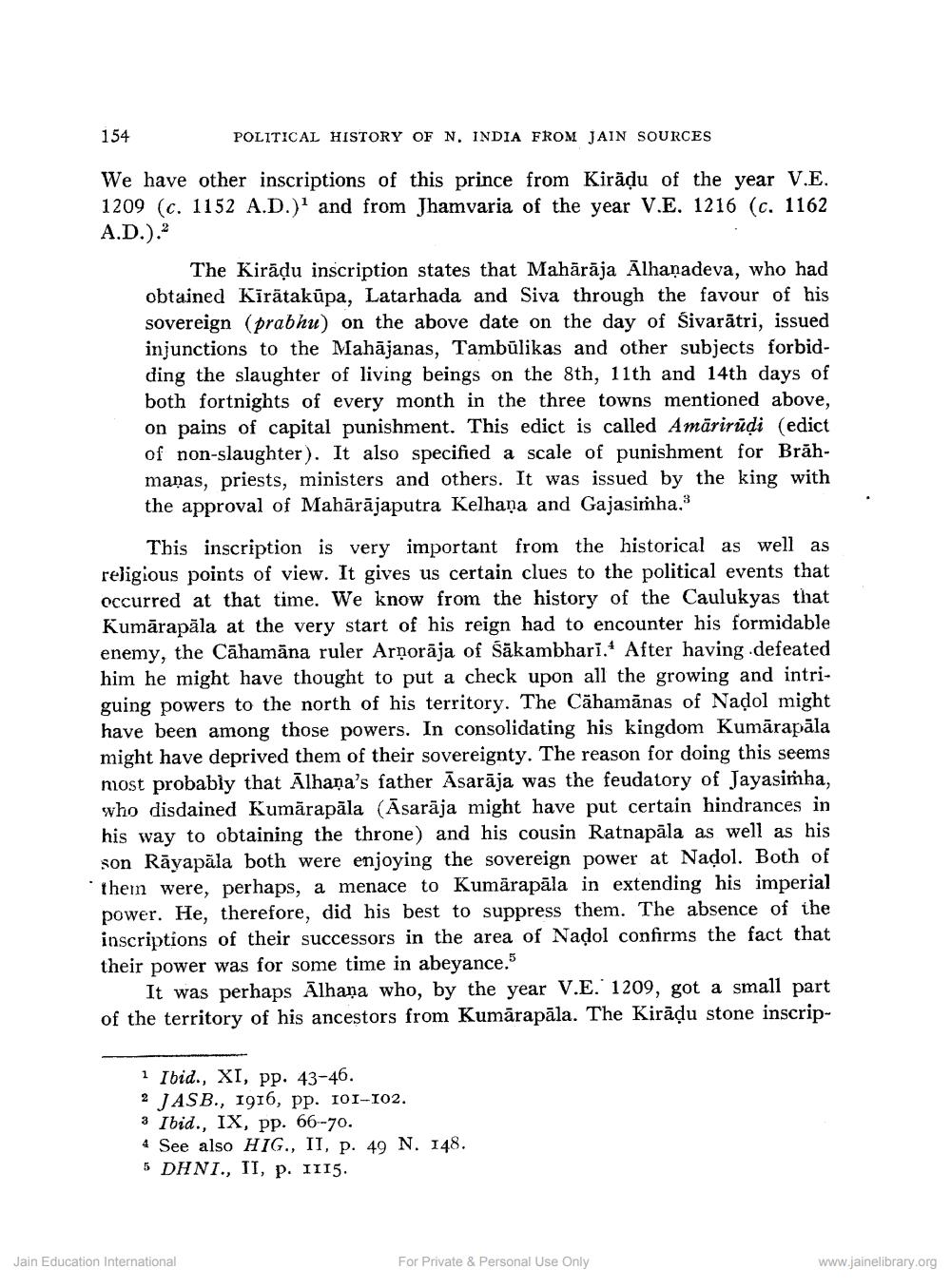________________
154
POLITICAL HISTORY OF N. INDIA FROM JAIN SOURCES
We have other inscriptions of this prince from Kiradu of the year V.E. 1209 (c. 1152 A.D.) and from Jhamvaria of the year V.E. 1216 (c. 1162 A.D.).
The Kirädu inscription states that Mahäräja Alhaņadeva, who had obtained Kīrätakūpa, Latarhada and Siva through the favour of his sovereign (prabhu) on the above date on the day of Sivarātri, issued injunctions to the Mahājanas, Tambulikas and other subjects forbidding the slaughter of living beings on the 8th, 11th and 14th days of both fortnights of every month in the three towns mentioned above, on pains of capital punishment. This edict is called Amärirūļi (edict of non-slaughter). It also specified a scale of punishment for Brahmanas, priests, ministers and others. It was issued by the king with the approval of Mahārājaputra Kelhana and Gajasimha 3
This inscription is very important from the historical as well as religious points of view. It gives us certain clues to the political events that occurred at that time. We know from the history of the Caulukyas that Kumārapāla at the very start of his reign had to encounter his formidable enemy, the Cāhamāna ruler Arņorāja of Säkambhari. After having defeated him he might have thought to put a check upon all the growing and intriguing powers to the north of his territory. The Cāhamānas of Nadol might have been among those powers. In consolidating his kingdom Kumārapāla might have deprived them of their sovereignty. The reason for doing this seems most probably that Alhana's father Āsarāja was the feudatory of Jayasimha, who disdained Kumārapāla (Asarāja might have put certain hindrances in his way to obtaining the throne) and his cousin Ratnapāla as well as his son Rāyapāla both were enjoying the sovereign power at Nadol. Both of them were, perhaps, a menace to Kumārapāla in extending his imperial power. He, therefore, did his best to suppress them. The absence of the inscriptions of their successors in the area of Nadol confirms the fact that their power was for some time in abeyance."
It was perhaps Alhana who, by the year V.E. 1209, got a small part of the territory of his ancestors from Kumārapāla. The Kirāļu stone inscrip
1 Ibid., XI, pp. 43-46. 2 JASB., 1916, pp. 101-102. 3 Ibid., IX, pp. 66-70. 4 See also HIG., II, p. 49 N. 148. 5 DHNI., II, p. 1115.
Jain Education International
For Private & Personal Use Only
www.jainelibrary.org




